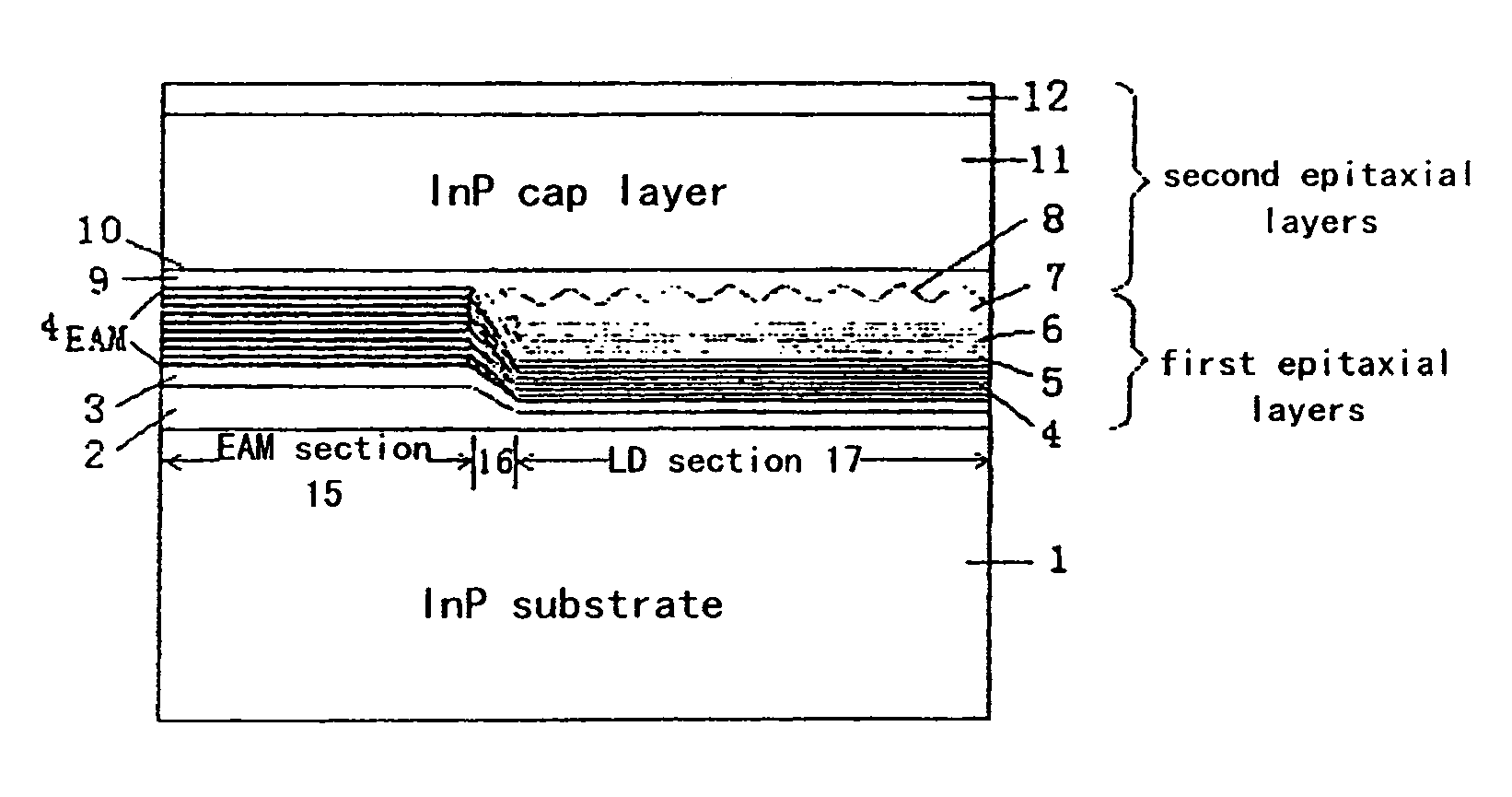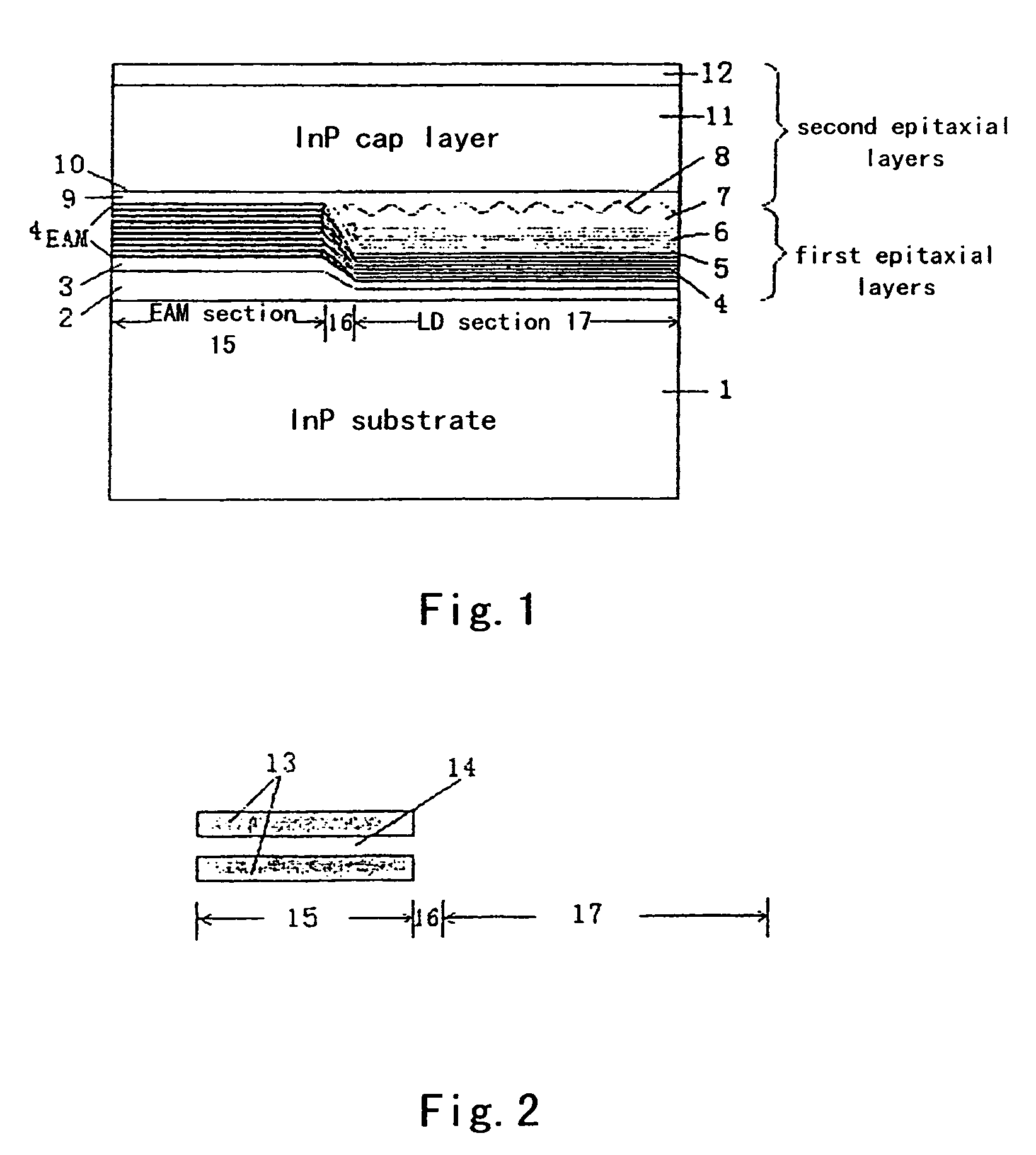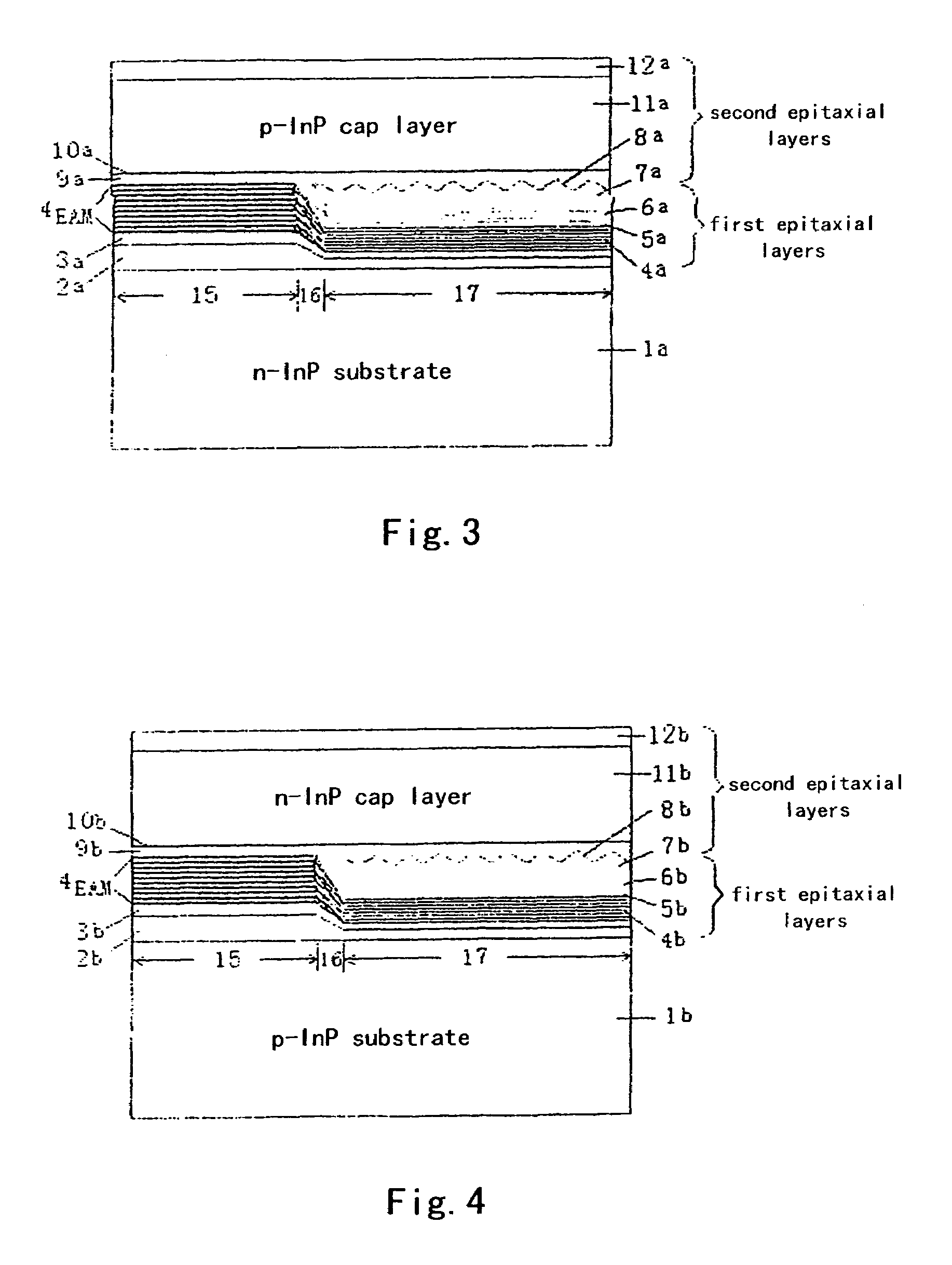However, the Butt-Joint method requires multiple epitaxial growths, complex manufacturing process and very high precision requirements of the process.
Additionally, the joining interface of the active sections, that is the joining interface of the EAM active section and the LD active section, which are respectively grown by two epitaxies, usually leads to
crystal quality problems such as holes or bumps, causing the low yield and high cost of EMLs.
1) Selective area growth (SAG) method. The EML devices manufactured by the famous corporations, such as NTT, Fujitsu, Nortel and Siemens, adopt the SAG method. This method grows
multiple quantum well (MQW) active
layers by one
epitaxy (for example,
Chinese Patent No. ZL00109780.6), and can get the bandgap
wavelength difference between LD-MQW
active layer and EAM-MQW
active layer up to 30 meV. Although the SAG method greatly simplifies the growth process and reduces the cost, its brought problem is that the structure parameters of the LD-MQW
active layer and those of the EAM-MQW active layer constrain each other, which is difficult to deal with in a single epitaxy. For example, in terms of reducing the
threshold current and weakening the influence of non-uniform carrier implantation, the number of the QW in the LD active layer is required to be small and the thickness of the wells is required to be thin, but in terms of
extinction ratio, the number of the QW in the EAM active layer is required to be large and the thickness of the wells is required to be thick. When the EML is actually manufactured by the SAG method, the numbers of the wells in the two active
layers are equal, which is the tradeoff between the two sections, but it can not overcome the
disadvantage that the thickness of the wells in the LD active layer is thick while the thickness of the wells in the EAM active layer is thin. Therefore, compared with the Butt-Joint method, the optical output power and the
extinction ratio of the EML devices manufactured by the SAG method is inferior, and it's difficult to improve the characteristics of the devices.
2) Identical active layer (IAL) method, for example, U.S. Pat. No. 5,548,607. The manufacturing process of this method is simplest, because the active layer structures of the LD and the EAM are identical. The
wavelength difference between LD section and EAM section is implemented by the red-shift of the oscillating
wavelength determined by the Bragg gratings etched in the LD region relative to the peak wavelength of the QW active layer. However, the EAM section strongly absorbs the light from the LD region after all, so the
threshold current of the device is high. It is difficult to improve the whole characteristics of EMLs by the IAL method.
3) QW intermixing (QWI) method, for example, IEEE
Photonics Technology Letters, Vol. 7(9), P. On the basis of the IAL structure, this method makes intermixing of the MQW in the EAM section by
ion implantation or
dielectric induced
diffusion plus annealing and so on to cause the blue-shift of the absorption peak wavelength of the MQW in this region, so as to reduce the
absorption loss and improve the characteristics. However, till now, the
repeatability of the intermixing technology hasn't be solved effectively.
4) Stacked-layer MQW structure, for example, IEEE
Photonics Technology Letters, Vol. 14(12), P. This method grows the 2-stacked-layer MQW structure by one epitaxy, one layer EAM-MQW and another layer LD-MQW, and the two
layers can be designed respectively so that the bandgap wavelength difference between them is no more than 60 nm. However, the EAM-MQW layer in the LD section not only absorbs the light from the LD-MQW, but also consumes the injection carrier, and the LD-MQW layer in the EAM section has relatively strong absorption of light when there is no bias
voltage, so EML devices of stacked-layer MQW structure have high threshold current and low optical output power. In 2003, we proposed an improved stacked-layer MQW structure (
Chinese patent application No. 200310122343.7), which improves the optical output power significantly by
etching the LD-MQW layer in the EAM section away by
photolithography and selective etching. However, the problem of high threshold current of these EMLs hasn't been solved yet.
 Login to View More
Login to View More  Login to View More
Login to View More 


